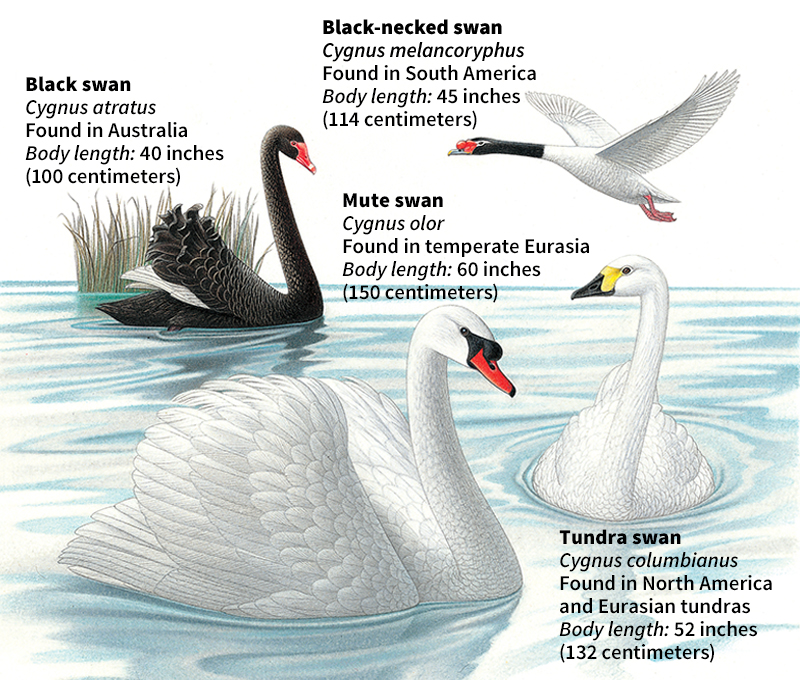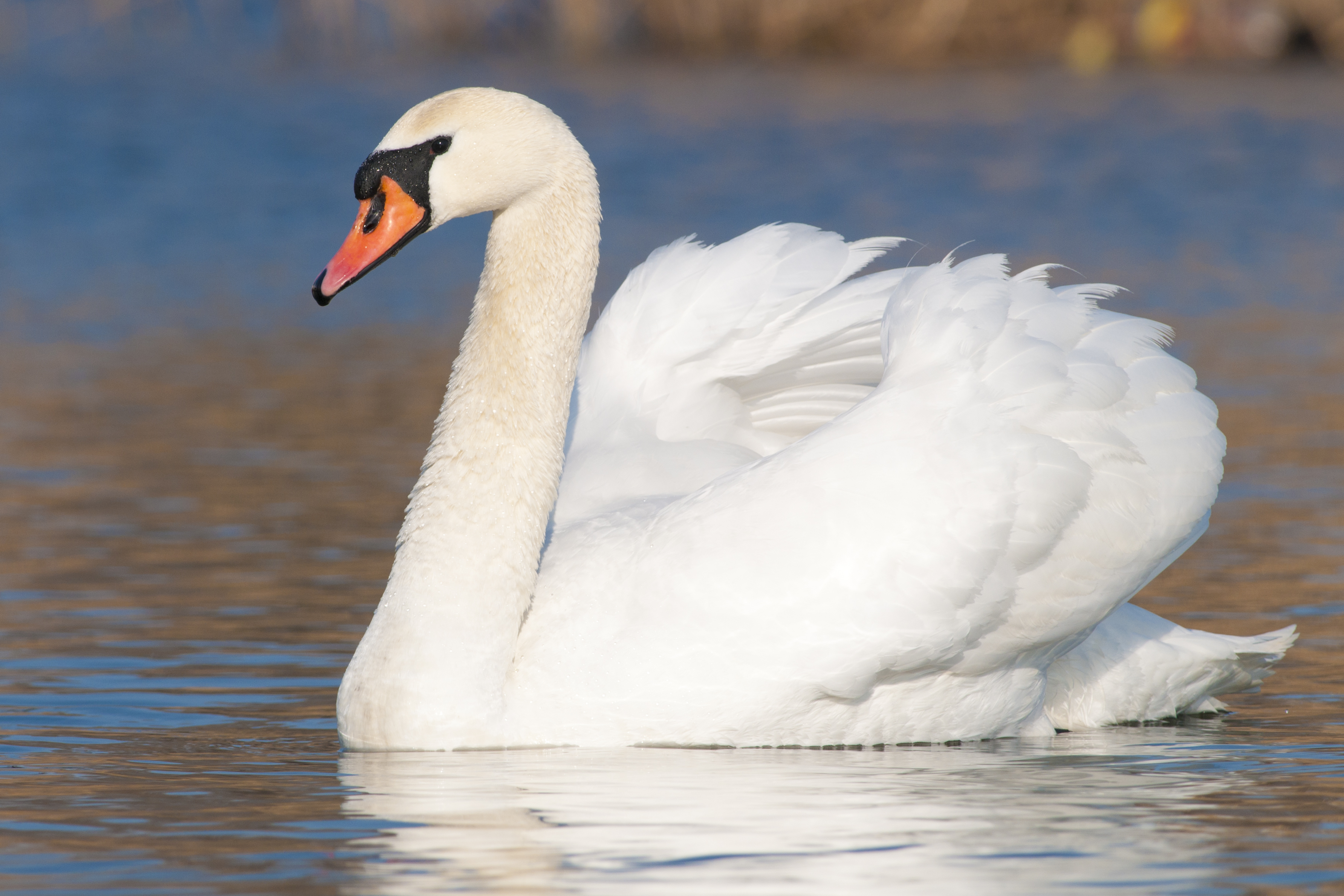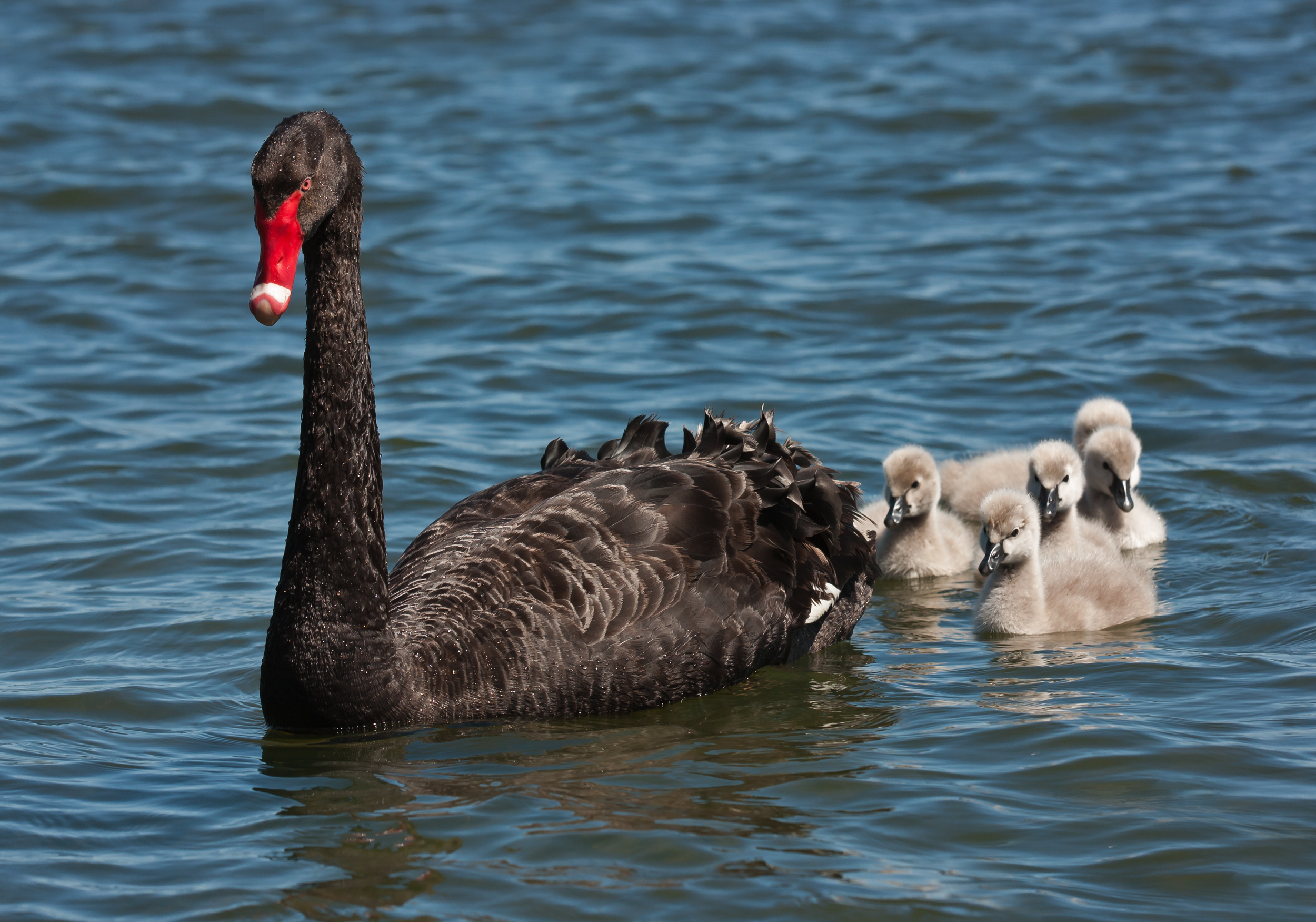Swan is a water bird that resembles ducks and geese. Like ducks and geese, swans have a flattened bill; a long neck; and water-repellent feathers. They also have long, pointed wings; a short tail; short legs; and webbed feet. But most swans are larger and have a much longer neck than ducks or geese.

Swans nest on all continents except Africa and Antarctica. They live chiefly in regions with a mild or cold climate. Their webbed feet make swans good swimmers. Swans also walk well on land. Swans make several vocal sounds, from whistles to trumpetlike calls. Most swans have white feathers. Male swans are called cobs. Females are called pens. Their offspring are called cygnets.
Loading the player...Tundra swan
Kinds.
There are seven species of swans. Four species live in the Northern Hemisphere. The others are found in the Southern Hemisphere. Northern swans have white feathers over their entire body. Southern swans have at least some black coloration.
The mute swan is the most common northern species. It is native to northern Europe and Asia. People can also see it in parks and zoos throughout the world. In some places outside of Europe and Asia, mute swans have escaped parks and now live in the wild. The mute swan has a curved neck. It holds its wings high over its back. This swan is quieter than other swans. But it hisses loudly when angry. The bill of the mute swan is orange. The bill has a black knob at the base.
The other three northern swans have straight necks and black bills. The tundra swan nests on the cold, treeless tundra of northern Asia, Europe, and North America. The whooper swan of Europe and Asia and the trumpeter swan of North America live in warmer regions. The trumpeter swan is also the largest swan. The adult male weighs about 26 pounds (12 kilograms).

The three southern swans are the black swan of Australia, and the black-necked swan and the Coscoroba swan of South America. The black swan has black feathers with white wing tips, and a red bill. The black-necked swan has white feathers except for its neck and head. The Coscoroba swan has white feathers with black wing tips. It is the smallest swan. The female weighs about 8 pounds (3.6 kilograms).

Habits.
Most swans nest along the shores of marshes and ponds in the summer. They move to large lakes and bays in the winter. Swans are strong, graceful flyers. However, many swans that live in public parks have their wings clipped so that they cannot fly. Swans feed mostly on underwater plants. Because of their long necks, they can graze in deeper water than can many ducks. Swans also eat grasses along the shore. Occasionally, they eat grain in upland fields.
Loading the player...Black-necked swan
When they are 2 or 3 years old, swans choose mates. The birds mate after highly vocal courtship displays. In one such display, called the triumph ceremony, the male and female swans face each other, raise their wings, and call loudly. Mated swans usually stay together for life. Some swans in captivity have lived more than 50 years.
Swans use grasses and other plant material to build large nests. The female usually lays four to six whitish eggs. Among most swans, only the female sits on the eggs to keep them warm. But the male black swan shares this duty with the female. The eggs must be warmed 30 to 35 days before they hatch. During this period, swans will attack foxes, dogs, people, and any other possible threats to their eggs. When cygnets hatch, they are covered with grayish-white down. They soon grow their flight feathers. The young swans can fly at 7 to 14 weeks of age. Small cygnets may ride on their parents’ backs. Swans have strong family ties. The young may remain with their parents until it is time to choose a mate.
Loading the player...Mute swan
